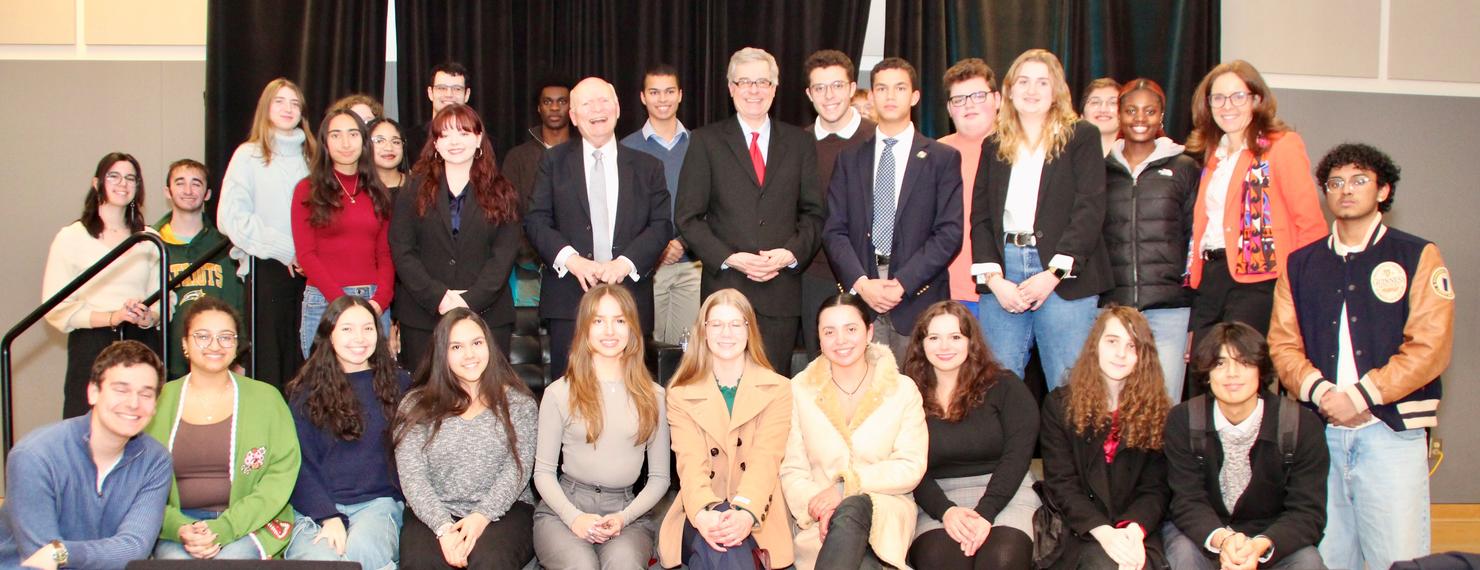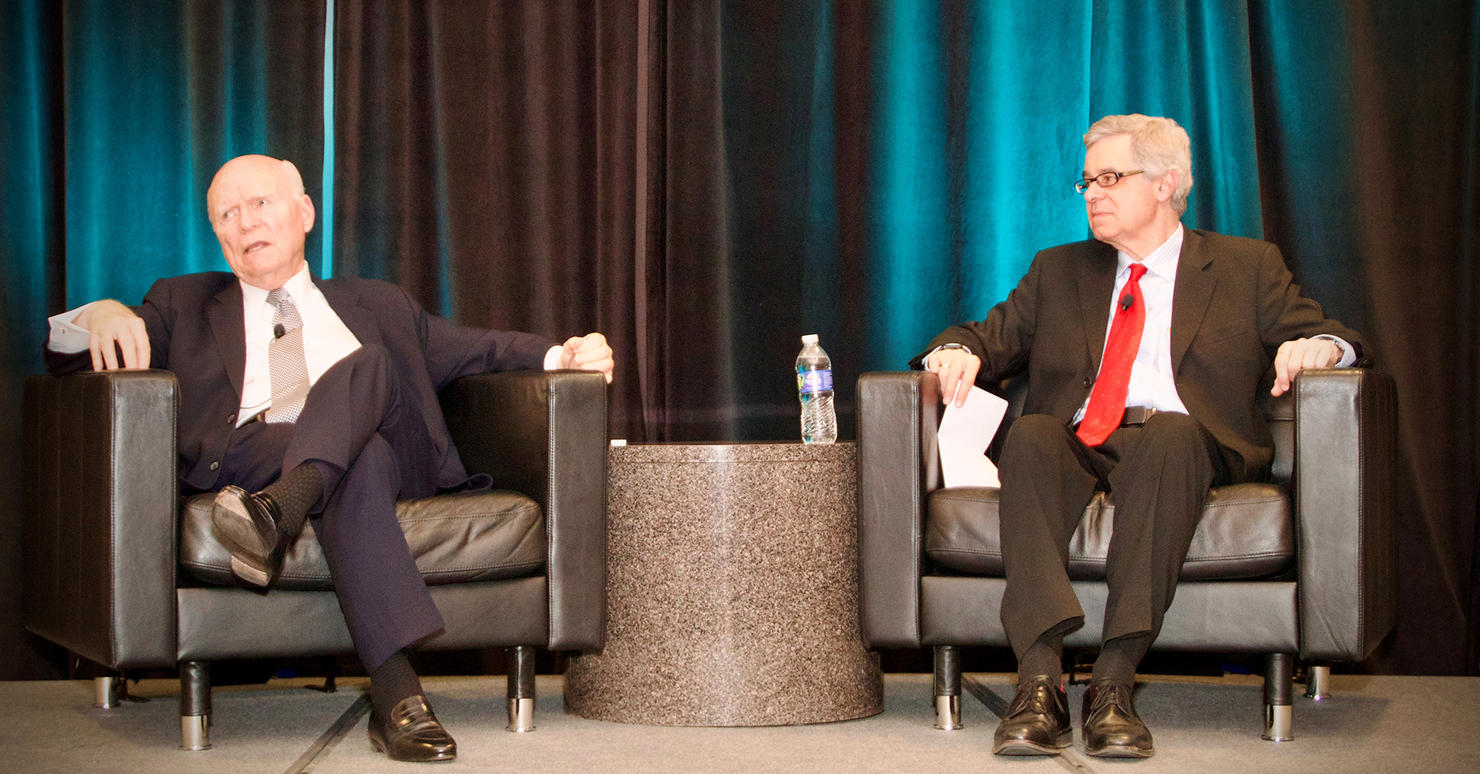In This Story

The U.S. Senate was against it. Few thought anyone would watch. The technology behind the idea was expensive. But journalist Brian Lamb saw a need for citizens to see how the federal government works and, after years of developing the concept, he launched Cable and Satellite Public Affairs Network—C-SPAN—in March 1979.
For the first time, Americans could see inside the chambers of Congress, listening to speeches and watching votes being cast by their representatives.
Lamb took the stage at George Mason University’s Mason Square in Arlington, Virginia, on Monday, February 10, offering his insights to the world of political communication in an interview conducted by founding Dean of the Schar School of Policy and Government Mark J. Rozell.
The audience of more than 80 students and community members, with others watching a livestream, was introduced to the history of the creation of C-SPAN, highlights of Lamb’s professional career, and analysis of the current media environment.
Lamb discussed how the rise of social media and its brevity does not compete with C-SPAN’s intent, which illuminates the workings of the federal government and explores American history, notably through exhaustive interviews with historians.
Over the years, Lamb has conducted thousands of interviews about books—in fact, he donated more than 800 books to George Mason Libraries, the host of Lamb’s appearance—and was somewhat saddened to report that while history should be written as “just what happened,” he said, historians often reveal their biases in their writing.
The network began with one channel in 1979 and now boasts three cable and internet streams; a 24-hour over-the-air and satellite radio station; 15 podcasts; and handy apps to put all the programming at an inquisitive citizen’s fingertips. When asked how the network might expand in the future, Lamb said the answer was simple: the courts.
“The Supreme Court does not have an excuse not to be on TV,” Lamb said, adding that what might be more interesting is watching proceedings at the district court level.
Addressing the several rows of students from the Schar School’s first-year learning community, Democracy Lab, Lamb beseeched them to read, and read a vast spectrum of ideological sources.
“I read the books that I disagree with all the time,” he said, “but I still read them.”
The full recording of the interview can be viewed on the Schar School YouTube channel here.

